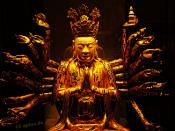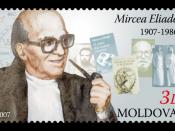When asked to imagine something perfect, like a perfect circle, people across the globe imagine a concentric round figure fulfilling a set of standards. The term perfection, however, loses its static nature when applied to such concepts as the perfect human being. Throughout history people have created standards for what the perfect person should be like. What a particular society sees as good or bad can be a main factor in influencing the idea of human perfectibility. A perfect person in a caveman society might be a strong aggressive bison hunter, but his mangy appearance and lack of acquaintance with a toothbrush might make him very imperfect today in a lawyer's suit in downtown New York. The same idea holds true for any other cultural tradition, including different religions. By taking a closer look at the three major eastern religions of Hinduism, Buddhism and Daoism, the idea of human perfection can be better understood.
The purpose of each religious tradition is the attainment of some ultimate goal. It is the achievement of this goal that characterizes the perfect human in that particular religion. This absolute is what Mircea Eliade refers to as "the sacred" (Eliade, 1959). For Hindus it is transcendence; a perfect Hindu is one who has transcended the world. In Buddhism "the sacred" is enlightenment; the perfect Buddhist is one who is enlightened. For Daoism it is harmony; the perfect Daoist is one who is in harmony with the people and things around him. By examining the importance of "the sacred" and how it can be achieved, we can better understand each religious tradition and their different views on perfection.
HINDUISM
The Hindu religion is comprised of many different sects. Some of the concepts differ slightly between the different forms. The most basic ideas, however, are widely accepted.


